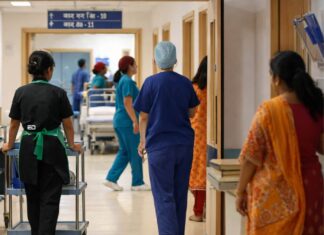“The most valuable of all capital is that invested in human beings”
This was said by Alfred Marshall in 1961. At least since 1776, economics has placed a premium on education. This quote is true and is in effect. The current fixation with growth and poverty is understandable but the realization that neither of the two is possible without a paradigm change in our approach to education and employment of the youth which must become the centrepiece of India’s development philosophy. As the Nobel Laureate Robert Lucas once remarked “Once one starts to think about economic growth, it is hard to think about anything else.”
Educational attainment has a strong impact on the growth of per capita GDP of a country. Human capital investment has been seen as a stronger investment than traditional investments. The social rate of return if invested in education is 7 per cent. An additional year of schooling is said to increase per capita GDP by 0.44 per cent. Education is a key area of research and the consensus remains that education is important for hastening the economics growth of our country. As far as India goes, post-independence, the process of planning the economic development reflected that education was not regarded for human capital accumulation. Now 5 year plans are being made and different development models are being looked at. Sustainable or Inclusive, education has to be an integral part of these plans and efforts from the government have to be put in so that the seed we sow now will grow up into a flourishing tree.
When we compare the education system of India with other countries the statistics are daunting. India ranks pretty low on all accounts. The Primary completion rate of India is 90 per cent, but it still ranks 71st out of 124 in the world. The number of primary education teachers per 1000 students is a staggering 3.21 and India ranks 104th out of 124 in the world. In average years of schooling of adults India ranks 65th out of 100 countries. India stands last on the list of universities in the top 100. The good news comes from the category of hours of instruction for pupils aged 9 in which we rank 5th out of 38 countries. The expenditure on higher education was raised in the 11th five year plan. To improve education in India, the expenditure ‘ceiling’ should be eased.
The following statistics will shock you. Only 63 per cent of male and 60 per cent of female students who had begun grade 1 reached grade 5, which is lower than lower – middle income countries where the per cents are 69 and 72 respectively. When we compare these numbers with China’s we see that we are miles behind them where the respective percentages are 82 and 80. Is the government paying less attention or are there too many corrupt leaders. In Mongolia, for the year, percentage of male and female reaching 5 grade who had begun grade 1 was 92 and 94 respectively. Now we should ask ourselves the question that where do we lack.
Indian government had started a scheme known as ‘The mid-day meal’ with a hope to increase the enrolment of children into schools. An effort put in by our government and a good one too but is it being properly implemented. If it is then incidences such as the one in Bihar where they found an amphibian which should not have happened.
Concluding by saying that this statistical analysis shows us that there need to be changes brought in the education system. The attitude towards education must change. Even a poor persons children must be able to go to school, we all have the Right to Education and we must use it. Let us take a step towards educating India and empowering it.
































